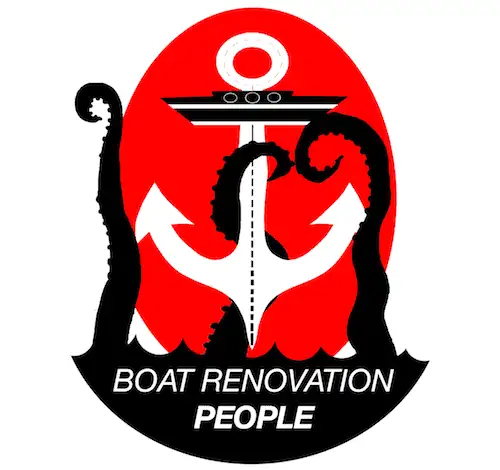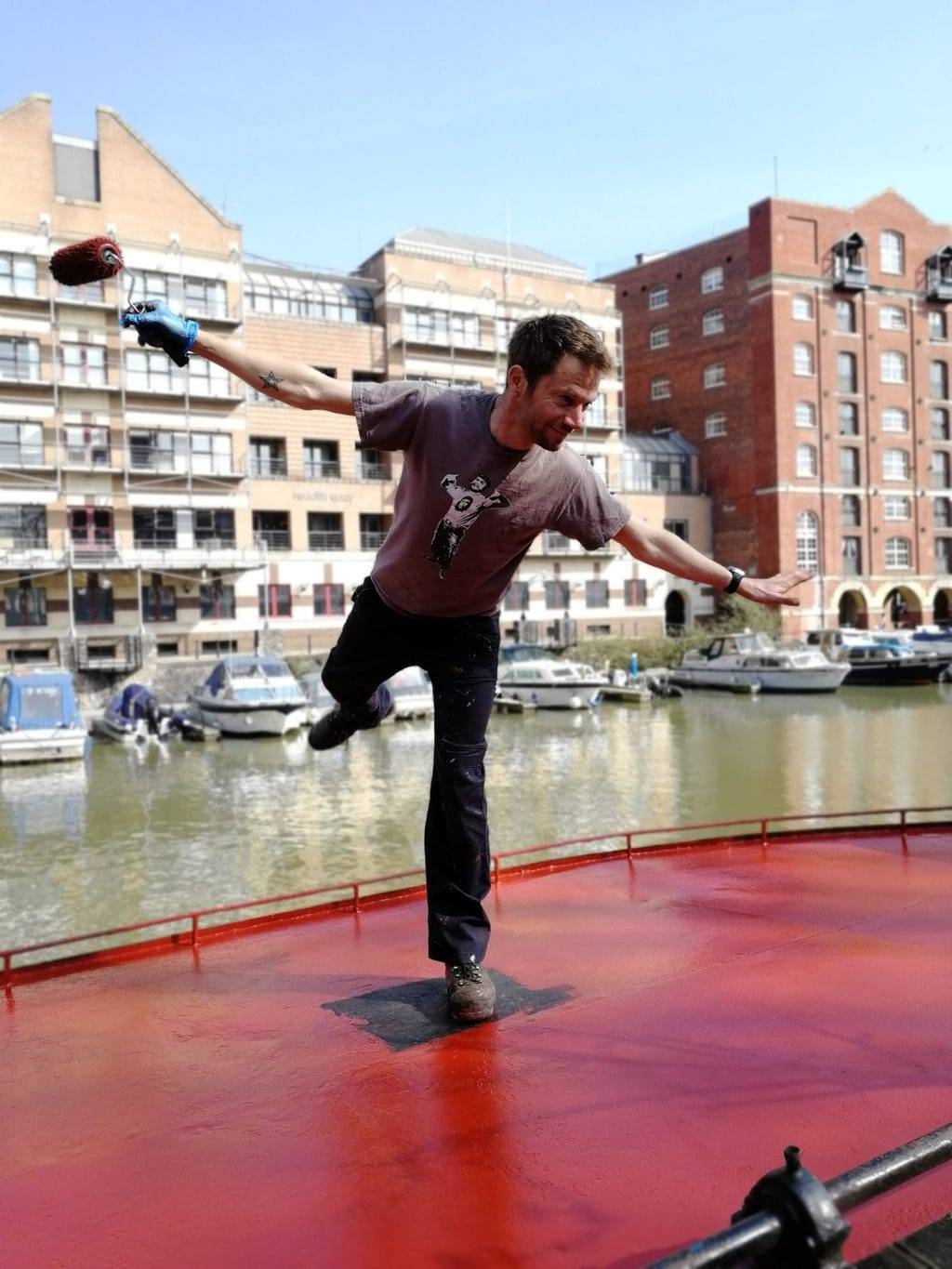This morning, I found myself hectically cycling around Bristol on a Yobike. What’s a
It wasn’t long after I departed from the sardined, 7.30am commuter train to Temple Meads that I found myself rolling down the industrial estates, covered in sweat. I was on a mission to source some packaging material for our new shop. All of which had to be done before I met Captain Bod from Bristol Boat Works for a day of hard graft. Luckily I made it through the city without
Table of Contents
Preperation Is Keying’
It was a beautiful Sunny morning, perfect for an afternoon of boat maintenance work. The mission of the day was to remove some teak decking from the stern of the 100-year-old wrought iron boat otherwise known as The Apple Bar. We would also need to prep and paint the wrought iron below it. Our main goal was to remove, rust, and flaking paint getting it ready for another season’s worth of Bristolian cider lovers. The fun part being, this all had to be completed in time for the bar to open! Apparently, The last thing someone wants on a lovely summers day is
wrought iron dust, being fired into their eyes, accompanied by the buzzing screams of a grinder.
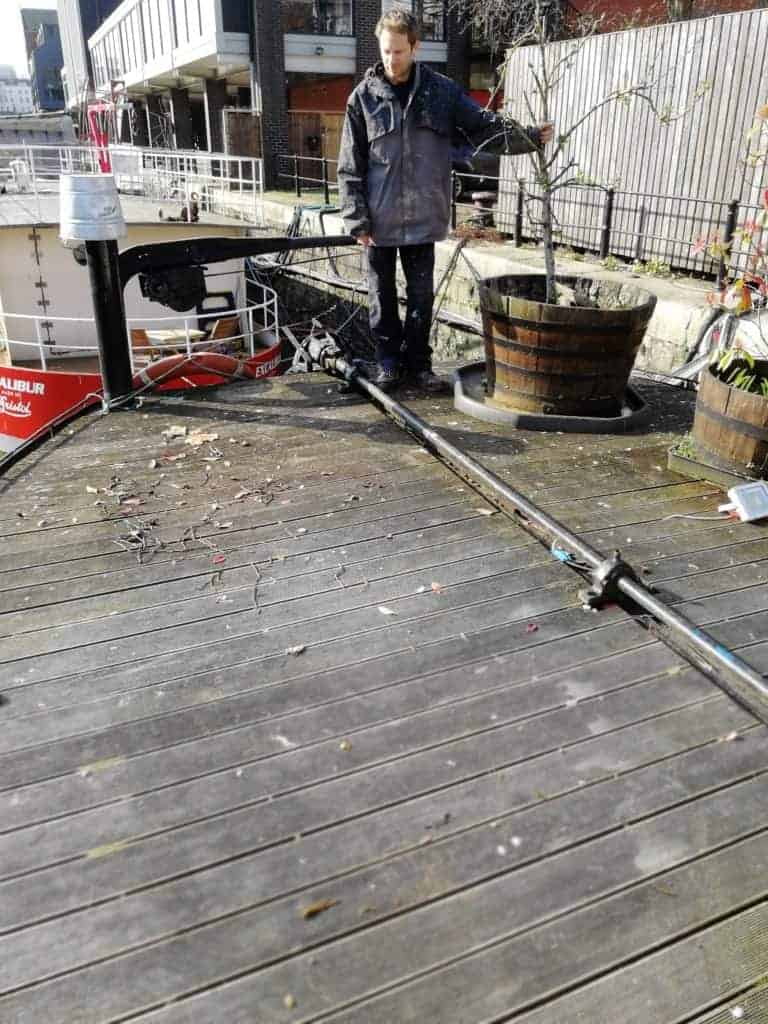
A Boating History
The apple is a beautifully converted Dutch barge in the heart of Bristol’s Old City with a long history. It is even rumoured that Hells Angels may have once owned the boat. Like all iron boats, the apple requires a labour of love and hard work to keep it looking sharp. Water and iron can work well together, but only if you stay on top of your maintenance.
Before we could even begin to prep the iron for painting we needed to remove the fibreglass tender that sat on the decking area above it. With some makeshift ropes, we lowered the tender into the water from the side of the barge. We took care not to dunk the bow of the boat under the water whilst lowering. Filling the boat up with water and sinking it wasn’t a good option but would have made for good filming. Once that job was out of the way, we went about removing the decking. It was easy to remove, as a carpenter had purposely made the decking area in sections so it could be removed and worked on.
We proceeded to carry the decking off the boat where the staff went about giving it a thorough jetwash ready for oiling. The iron was now exposed albeit covered in pigeon poop and dirt. We went about prepping the area and getting it ready for a coat of red oxide rust primer. After some hours of attacking with grinders, scrapers and steel wire wheels we were ready for a good hoover and acetone to wipe down. Captain Bod suggested that we used a grinder with a wire brush, this made short work of any loose paint. I had previously used a wire brush in a drill, but it really didn’t compare to using one in a grinder with a high RPM.
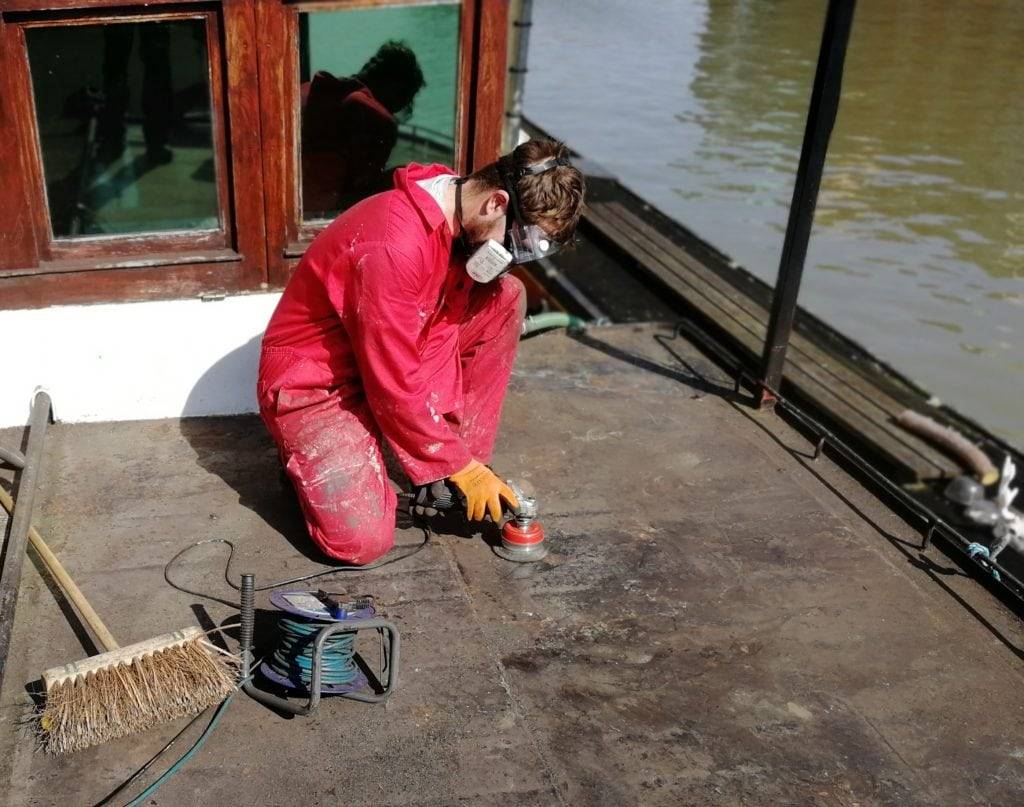
When Piegeions Attack
We began to paint the deck using brushes to key in the sides and rollers for the larger areas. We may have swept all of the surrounding walls and decking to stop any debris being blown onto our fresh paint but one thing we forgot to factor was the pigeons. As soon as we stopped to grab a bite to eat the pigeons swooped in. Apparently, there is nothing pigeons love more than walking over fresh red oxide- bastards!
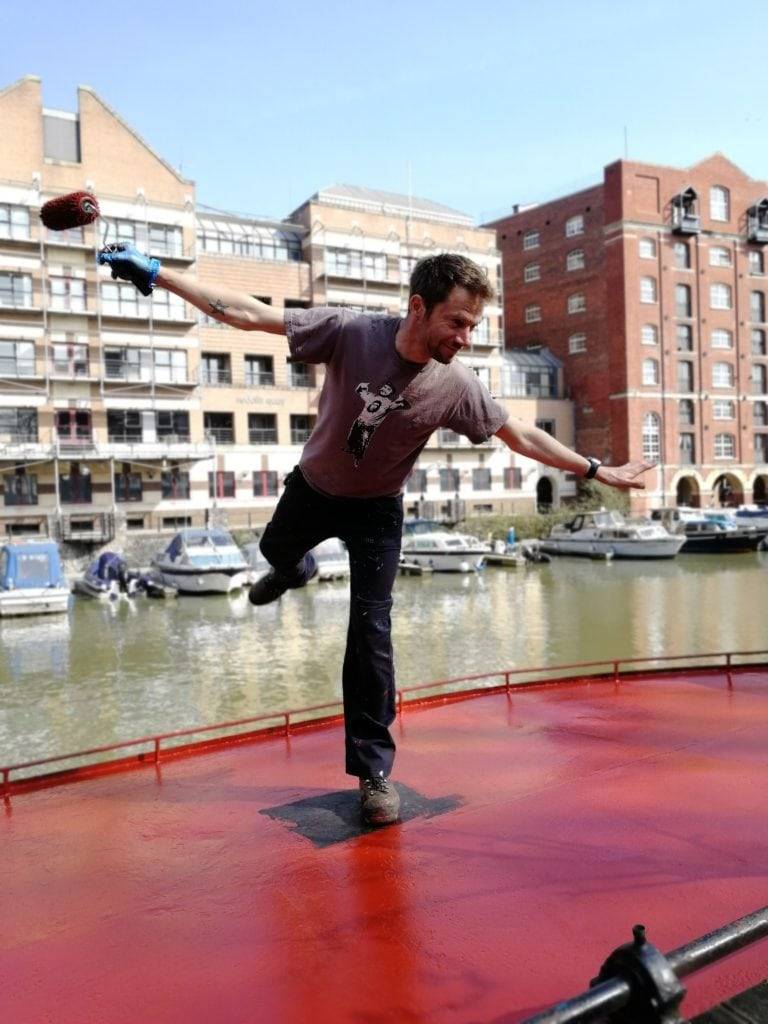
Pigeon attacks aside we managed to get the area prepped, painted and decking ready to be returned before the bar opened. All that was left was to repeat the process on the other side of the stern, weather permitted. Lastly, we returned to the bar where the friendly staff were waiting with a lovely bottle of cider- perfecto!
